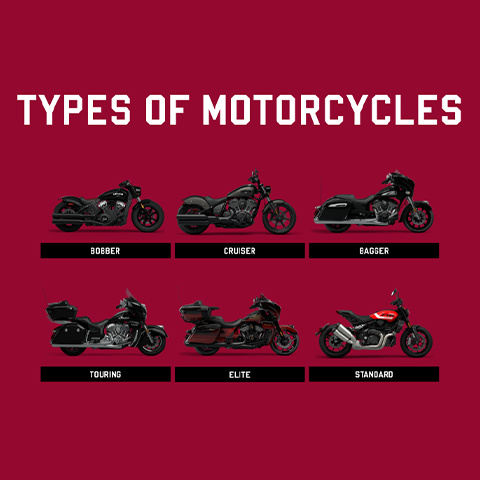Getting The Motorcycle Boots To Work
Getting The Motorcycle Boots To Work
Blog Article
The Of Motorcycle Boots
Table of ContentsGet This Report on Motorcycle BootsThe Buzz on Motorcycle BootsIndicators on Motorcycle Boots You Should KnowWhat Does Motorcycle Boots Mean?Little Known Questions About Motorcycle Boots.Facts About Motorcycle Boots Revealed
Motorcycle elements and systems for a motorbike are engineered, manufactured, and assembled in order to generate motorbike designs with the desired efficiency, looks, and price. The vital parts of modern motorcycles exist listed below. The chassis of a motorcycle consists of the frame and suspension, along with the front forks, of the lorry.Carbon fibre, titanium, and magnesium are made use of in a few very pricey customized frameworks. The frame includes the head tube that holds the front fork - motorcycle boots and permits it to pivot. Some motorbikes consist of the engine as a load-bearing stressed participant; this has actually been made use of throughout bike history however is now ending up being a lot more common.
It was extensively unpopular and typically regarded as a negative idea at the time. It has actually since gotten some cachet in the contemporary custom-made bike globe as well because of the room savings it can pay for and the reference to an earlier age.
Though any type of storage container for fuel might be so called, the term is normally related to part of an engine system in which the gas is kept and pushed (fuel pump) or launched (pressurized gas) into an engine. A motorcycle fork is the portion of a motorcycle that holds the front wheel and enables one to steer.
Some Of Motorcycle Boots
The mix of rake and route determines just how stable the motorcycle is. motorcycle boots. The 'fork' on a bike contains numerous components. The three-way trees (likewise understood as yokes) hold the fork tubes (which have the fork springtimes), and are secured to the neck of the structure by the guiding stem.

, which needs both lubrication and change for elongation (stretch) that takes place with wear. The lubricating substance is subject to being thrown off the fast-moving chain and results in gunk and dust accumulation. Chains do deteriorate, and excessive wear on the front and rear sprockets can be harmful.
Conventional roller chain-drives endure the possibility for vibration, as the efficient distance of action in a chain and gear mix regularly alters during the change ("chordal activity"). If a drive gear turns at consistent RPM, then the chain (and the driven sprocket) click now should accelerate and decelerate regularly. The majority of chain-driven motorcycles are fitted with a rubber bushed back wheel hub to eliminate this vibration issue.
These chain oilers differ in sophistication, however all add considerably to the life of the chain. The custom of lubing by submersing the chain in a tin of hot oil discontinued in the very early 1970s, when most chains had rubber "O'-rings.
How Motorcycle Boots can Save You Time, Stress, and Money.
They are not as sturdy when subjected to high horse power as a chain. You can not modify the size and change final drive ratios as easily as chains. And require larger sheaves compared to chain gears to obtain a reliable final drive ratio.
A shaft-drive is generally entirely confined; the aesthetic sign is a tube expanding from the back of the transmission to a bell housing on the back wheel. Inside the bell housing a bevel equipment on the shaft mates with one more on the wheel place. This arrangement is premium in terms of noise and cleanliness and is virtually maintenance-free, with the exception of occasional fluid adjustments.
The added equipment collections are a source of power loss and included weight. Essentially all high-performance auto racing motorbikes utilize chain-drive due to the fact that they are the most mechanically efficient sending power to the back wheel.

Little Known Questions About Motorcycle Boots.
There are tires designed for dust bikes, touring, sporting activity and cruiser bikes. Dirt bike tires have knobbly, deep treads for optimum grip on loosened dirt, mud, or crushed rock; such tires have a tendency to be much less secure and noisier on smooth surface areas.
Touring tires are usually made of a more challenging rubber substance for better resilience, these might last longer however have a tendency to provide less outright hold compared to sporting activities tires at ideal operating temperatures. Visiting tires generally offer a lot more grip at lower temperature levels and can be much more matched to riding in cool or winter months conditions where a sport tire might never ever reach its optimum operating temperature level.
These often tend to have more powerful sidewalls as they are normally fitted to larger makers. Motorsport or competing tires offer the highest of degrees of grasp. Because of the heats at which these tires commonly run, make use of outside an auto racing environment is dangerous, normally these tires do not reach their optimum temperature level which supplies less than optimal grip.
Motorcycle Boots Fundamentals Explained

This can lead to brake dive. Brakes can either be drum or disc based, with disc brakes being much more usual on large, modern-day or a lot more costly bikes for their much premium quiting power, particularly in wet conditions. There are many brake-performance-enhancing aftermarket parts offered for the majority of motorcycles, consisting of original site brake pads of varying substances and steel-braided brake lines.
Report this page